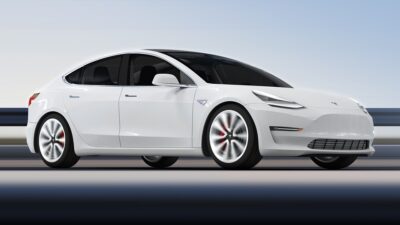As urban populations surge across the globe, the concept of smart cities is gaining traction. By integrating technology and data into urban planning and infrastructure, cities are being reimagined to enhance the quality of life for residents. A key component of this futuristic vision is the emergence of self-driving cars, which promise to revolutionize transportation. Together, smart cities and autonomous vehicles represent a powerful synergy poised to transform urban living.
The Smart City Framework
Smart cities leverage Internet of Things (IoT) technology, big data, and advanced analytics to optimize urban operations. This framework encompasses a range of initiatives, including efficient waste management, smart energy consumption, and improved public safety. Here are some defining features of smart cities:
-
Connectivity: Smart cities are designed with advanced telecommunications infrastructures, such as 5G networks, that allow seamless data transmission. This connectivity enables real-time communication between various city components, including transportation systems, utility grids, and public services.
-
Data-Driven Decision Making: By harnessing big data analytics, city planners can make informed decisions. For instance, traffic flow can be analyzed to reduce congestion, while energy usage data can lead to sustainable practices.
-
Sustainability Initiatives: Smart cities prioritize sustainability through eco-friendly building designs, renewable energy sources, and green public transportation options. By minimizing their environmental impact, they enhance the quality of life for current and future generations.
- Citizen Engagement: These urban spaces encourage community involvement through digital platforms that allow residents to voice their opinions and provide feedback on city initiatives. This fosters a sense of ownership and collaboration.
The Role of Self-Driving Cars
Self-driving cars are more than just a technological novelty; they are a transformative force for urban transportation. With the potential to reduce accidents, decrease traffic congestion, and enhance mobility for all, these vehicles can play a vital role in the evolution of smart cities. Here’s how:
-
Enhanced Safety: Autonomous vehicles rely on advanced sensors, cameras, and AI algorithms to navigate safely. Studies indicate that self-driving cars could significantly reduce traffic accidents caused by human error, currently responsible for over 90% of crashes.
-
Efficient Traffic Management: Self-driving cars can communicate with smart traffic signals and other vehicles in real-time, allowing for optimized routing and coordination. This can alleviate traffic congestion and reduce travel times, making urban environments more efficient.
-
Increased Accessibility: Autonomous vehicles hold the potential to serve individuals who are unable to drive due to age, disability, or financial constraints. This inclusivity promotes mobility and independence for a broader range of residents.
- Sustainable Transit Solutions: Many self-driving vehicle programs are exploring electric options, contributing to reduced emissions. Coupling these vehicles with smart city infrastructure can further optimize energy usage and encourage the use of renewable sources.
Synergizing Smart Cities and Autonomous Vehicles
The integration of self-driving cars into the framework of smart cities leads to potential benefits that extend beyond transportation. Here are a few key areas where this synergy can thrive:
-
Smart Parking Solutions: Autonomous vehicles equipped with parking algorithms can locate available parking spaces with high precision. This reduces the amount of time vehicles spend circling city blocks, which helps decrease congestion and curb emissions.
-
Dynamic Public Transport: Imagine a public transport system that can adjust routes and schedules in real-time based on passenger demand. Self-driving buses or shuttles could work within smart city frameworks to provide on-demand services that efficiently meet the needs of residents.
-
Urban Design & Zoning: With reduced reliance on personal vehicles, urban planners can rethink space allocation. Inefficient parking lots can be repurposed into green spaces or community areas, improving urban livability.
- Data Collection and Usage: The data generated by autonomous vehicles can offer insights into traffic patterns, roadway conditions, and commuter behavior. This enables cities to make informed adjustments to infrastructure and services.
Challenges and Considerations
Despite the promising vision of smart cities and self-driving cars, several challenges need addressing:
-
Regulatory Frameworks: Establishing legal guidelines for autonomous vehicles and related infrastructure is crucial for safe integration. Policymakers must collaborate with technology companies to create comprehensive regulations.
-
Public Acceptance: Gaining public trust in self-driving technology is essential for widespread adoption. Educational campaigns can help address safety concerns and highlight the benefits of autonomous vehicles.
- Equity in Implementation: Ensuring that smart city initiatives, including autonomous transportation, are accessible to all communities is a key challenge. Strategies must be developed to prevent technology from exacerbating existing inequalities.
Conclusion
The convergence of smart cities and self-driving cars symbolizes a vision for a sustainable, efficient, and inclusive urban future. While challenges lie ahead, the potential benefits are immense. By embracing innovation and fostering collaboration among stakeholders, cities can pave the way for a transformative era that enhances the quality of life for residents and minimizes environmental impact, ultimately leading us toward a smarter, safer tomorrow.



